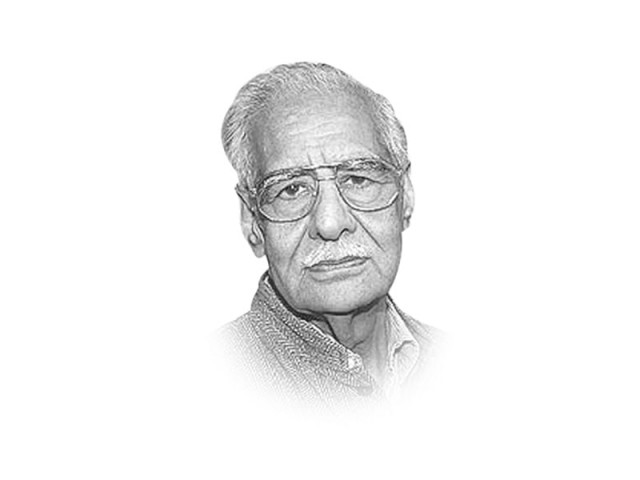Another futile attempt to switch over to Hindi
How many regional languages will survive 50 years hence is anybody’s guess

The writer is a syndicated columnist and a former member of India’s Rajya Sabha
The latest is that DMK leader M K Stalin has accused the Centre of trying to relegate people who don’t speak Hindi to second-class citizens and of pushing the nation into becoming “Hindia”. The controversy had been generated after President Pranab Mukherjee accepted the recommendation of the Committee of Parliament on Official Language that all dignitaries, including the president and ministers, especially those who can read and speak Hindi, may be requested to give their speech or statement in Hindi only.
The president has accepted several other recommendations, including making announcements on board aircraft in Hindi followed by English. However, Union Information and Broadcasting Minister M Venkaiah Naidu said the allegation that Hindi was being imposed is “completely false” and the government has “no intention” of imposing any language, particularly Hindi, on anyone.
The sharp reaction by leaders, particularly Stalin, indicates that at least Tamil Nadu is not yet ready to switch over. The issue is several decades old and yet it has not found any satisfactory solution. The non-Hindi speaking states repeat Prime Minister Jawaharlal Nehru’s assurance that the switchover to Hindi from English will take place only when the non-Hindi speaking people say that they are ready for it. His categorical statement disappointed Hindi fanatics but the nation on the whole heaved a sigh of relief that India had retrieved from the brink.
The anti-Hindi movement gained momentum in the then Madras state where college students demonstrated against the switchover in 1965. Soon after, a full-scale riot broke out in Madurai, sparking off a minor altercation between agitating students and Congress party members. The riots spread all over the state and continued unabated for a couple of months.
They were marked by acts of violence, arson, looting, police firing and lathi charges. The then ruling Congress in the state had to call in paramilitary forces to quell the agitation. But their involvement resulted in deaths of nearly 70-odd people including some policemen. To normalise the situation, Prime Minister Lal Bahadur Shastri reiterated Nehru’s assurance that English would continue to be used as the official language as long as the non-Hindi speaking states wanted. The riots subsided after Shastri’s promise, as did the student agitation.
But then the agitation had led to major political changes in the state. The DMK captured power in the 1967 assembly elections and thereafter the Congress never came to power in Tamil Nadu. The Official Languages Act was eventually amended in 1967 by the Congress headed by Prime Minister Indira Gandhi to guarantee the indefinite use of Hindi and English as official languages. This effectively ensured the current “virtual indefinite policy of bilingualism” of the Indian Republic. There were also two similar but smaller agitations in 1968 and 1986 which had varying degrees of success.
In fact, within the very first fortnight of Prime Minister Narendra Modi’s regime, the central government offices had received a circular that Hindi should be used on social media. This was an attempt to enter through backdoor. The non-Hindi speaking states spotted the fugitive move and protested against it. New Delhi readily withdrew its step and declared that the circular was meant only for the Hindi-speaking states.
The latest statement by Home Minister Rijiju has only rekindled the fears of non-Hindi speaking people. And they are afraid of what may happen tomorrow. Modi’s government is guided, if not goaded, by Hindi chauvinists. The BJP has several liberal leaders who realise that the pace of switchover to Hindi would have to be slow, keeping in mind unity and diversity. Apparently, they do not have much say.
The India of today is very different from what it was 50 years ago, with each linguistic group asserting its identity. The turmoil during the states’ reorganisation process should be a warning. The idea of India can be jeopardised. The entire fabric can get torn if the sensitivities of the people are not allayed. What is the hurry? A few more decades’ wait is too small a price to pay for preserving the nation’s cohesion.
India has gone through large linguistic riots in the late 1950s and early 1960s following the home ministry’s instructions to different departments to make preparations for a switchover from English to Hindi as laid down in the Constitution. I wish this bilingualism should continue without anyone tinkering with it. But then Modi’s men seem to be hastening the process without considering the sentiments of non-Hindi speaking people. The government wants to restrict the use of English to certain fields.
Yet, they realise that their haste can tell upon the country’s unity. The non-Hindi speaking states, particularly Tamil Nadu, have accepted the constitutional provision that Hindi is the Indian Union’s language. But they want time to learn it and come up to the standards of people living in the Hindi belt like Uttar Pradesh, Madhya Pradesh or Rajasthan.
No doubt, Modi feels at home with Hindi and his sweep in elections is primarily because of the campaign he led in Hindi, somewhat Sanskritised for northern Indians. But he should remember Nehru’s promise made in 1963 that both Hindi and English would continue to be the link languages for administration throughout the country. Nehru did not fix any deadline for the exclusive use of Hindi.
Heritage is linked with languages and therefore leaders all over the country will have to devise ways and means whereby regional languages get succor. Without a long-term plan to reinvigorate them, some regional languages would fall by the wayside as the days go by. How many regional languages will survive 50 years hence is anybody’s guess.
Published in The Express Tribune, April 28th, 2017.
Like Opinion & Editorial on Facebook, follow @ETOpEd on Twitter to receive all updates on all our daily pieces.
















COMMENTS
Comments are moderated and generally will be posted if they are on-topic and not abusive.
For more information, please see our Comments FAQ